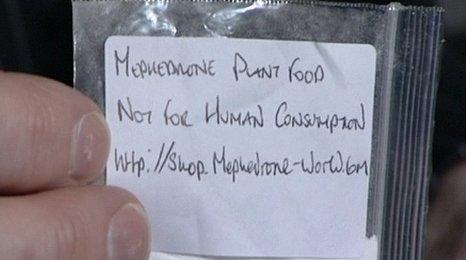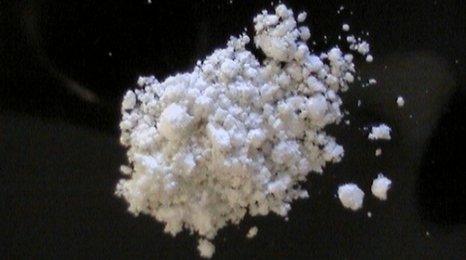Ecstasy 'disappearing' from British clubs
- Published
Real ecstasy pills have almost vanished from Britain's clubs over the last two years, an investigation for Radio 1 Newsbeat suggest.
Almost all of the tablets seized by police are now testing negative for the active chemical in ecstasy, MDMA.
"It's a huge drop," said Dean Aimes at the Forensic Science Service. "The pill market has changed and we see very few ecstasy tablets now."
Trends in the drugs market could explain part of the fall.
That could mean substances like mephedrone taking the place of ecstasy.
But both dealers and law enforcement agencies say a global crackdown on the industrial chemicals, or precursors, used to make the drug is a more significant factor.
Illegal laboratories in Europe are now unable to produce MDMA, so are being forced to use other chemicals with effects similar to weak amphetamines.
'Obviously changed something'
1.5% of 16 to 59-year-olds who fill out the annual British crime survey say they take ecstasy at least once a year.
Multiplied across the population it suggests at least 540,000 people use the drug, making it the third most popular illegal substance after cannabis and cocaine.
But users say the availability and purity of the pills on the market today has fallen sharply.
"We've just seen this sudden drop. The experience has completely changed in two years," one told Newsbeat.
"We've started wondering what is in the pills because they must have changed something."
The Surgery: Find out more about Ecstasy
Another said: "There is a real drought in the UK. More people are taking cocaine because ecstasy just isn't available anymore."
Figures from the Forensic Science Service show a sharp fall in the number of pills testing positive for MDMA.
Just 27 batches seized in the first three months of 2010 contained the chemical down from 152 in 2009 and 1046 in 2006.
Police agencies and drug researchers attribute the fall to tighter restrictions on the 'precursor' chemicals used to make ecstasy in the first place.
"It's relatively simple," said Roumen Sedefov, at the European Monitoring Centre for Drugs and Drug Addiction.
"We have observed a lack of precursors as the basic reason. For years manufacturers were using chemicals from China and now that is more tightly controlled."
Switch to peps
There is growing evidence laboratories in Europe are switching from making MDMA to tablets containing piperazines, a little known family of chemicals found in many of the so called "legal highs" that were banned in December 2009.
Those pills are often sold as ecstasy even though the effect on the body is more like weak amphetamines and can cause vomiting and sickness.

Safrole oil is made from the bark of an endangered South-East Asian tree
The Forensic Science Service tested 386 batches of pills containing piperazines in the first three months of 2010 - up from zero in 2005 and far higher than the 27 that contained MDMA.
A study of the substances found at last year's Glastonbury Festival by staff at St George's Hospital, part of the University of London, confirms the trend.
Of the 1,848 tablets seized by security in 2009, 695 tested positive for piperazines while just 154 contained MDMA.
"People might think they are taking ecstasy but they aren't," said Dr John Ramsay, from St George's.
"You can't possibly know what's in the tablets because they look exactly the same. Some have nasty side effects.
"One of the chemicals we tested has even been used to cause headaches, to try and research them."
"You can take too much and overdose or just have a bad time. The truth is you never know quite what you're going to get."
- Published16 April 2010

- Published16 April 2010

- Published13 January 2010

- Published25 September 2009